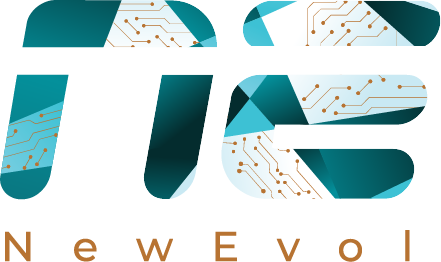Why You Need a Dynamic Threat Defense Platform with AI Capabilities

Indian enterprises are expanding rapidly across sectors such as finance, manufacturing, healthcare, and e-commerce. Alongside this growth comes an increased exposure to sophisticated cyber threats. From ransomware and phishing campaigns to advanced persistent threats (APTs) and insider attacks, the threat landscape is evolving faster than traditional security measures can handle. To address these challenges proactively, many organizations are increasingly relying on advanced cybersecurity services in India that combine real-time monitoring, threat intelligence, and AI-driven defenses.
To effectively combat these threats, organizations need more than reactive security. They require a Dynamic Threat Defense Platform (DTDP) with AI capabilities—a solution designed to detect, predict, and neutralize threats in real-time. Leveraging artificial intelligence, machine learning, and automation, such platforms empower enterprises in India to stay ahead of cyber adversaries and protect critical digital assets.
Understanding Dynamic Threat Defense
A Dynamic Threat Defense Platform is an advanced cybersecurity solution that goes beyond conventional firewalls and antivirus tools. It combines real-time threat intelligence, continuous monitoring, automated response, and predictive analytics to proactively defend against evolving threats. Unlike static security systems that rely on predefined rules, DTDPs adapt dynamically to emerging attack patterns, minimizing response time and maximizing protection.
The IT security services market in India is valued at approximately USD 10.84 billion in 2025 and is projected to grow at a CAGR of 9.6%, reaching USD 20.59 billion by 2032. Growth is driven by increased adoption of cloud security, network protections, and compliance demands.
Key characteristics of a dynamic threat defense platform include:
- Real-Time Threat Detection – Continuous monitoring of network traffic, endpoints, and cloud environments to identify suspicious activity.
- Adaptive Security – AI-driven analytics that evolve with new attack techniques and tactics.
- Automated Response – Rapid containment and remediation of threats without human intervention.
- Centralized Visibility – Unified dashboards that provide insights across the organization’s entire IT ecosystem.
- Predictive Threat Intelligence – Leveraging historical and global data to anticipate and prevent attacks before they occur.
For Indian enterprises facing increasingly sophisticated cyberattacks, DTDPs offer a proactive and intelligent defense strategy that traditional security tools cannot match.
The Role of AI in Threat Defense
Artificial intelligence is revolutionizing cybersecurity by introducing automation, intelligence, and predictive capabilities into threat defense. Here’s how AI enhances a dynamic threat defense platform:
1. Advanced Threat Detection
AI algorithms analyze vast amounts of data from endpoints, networks, applications, and cloud environments to identify anomalies that indicate malicious activity. By recognizing subtle patterns that may go unnoticed by human analysts, AI can detect threats such as:
- Zero-day exploits
- Fileless malware attacks
- Credential theft and lateral movement within networks
For Indian organizations, this capability is critical, given the high volume of cyberattacks targeting sectors like banking, fintech, and critical infrastructure.
2. Behavioral Analytics
AI-powered behavioral analytics monitor user and system behavior to establish a baseline of normal activity. Deviations from this baseline, such as unusual login attempts or unexpected data transfers, are flagged as potential threats. This approach helps organizations detect insider threats and compromised accounts, which are often difficult to identify using traditional rule-based systems.
3. Predictive Threat Intelligence
AI can process global threat intelligence feeds and historical attack data to predict potential attacks before they happen. By identifying emerging tactics, techniques, and procedures (TTPs), organizations in India can proactively implement mitigation strategies, reducing the risk of successful breaches.
4. Automated Response and Orchestration
Time is of the essence in cybersecurity. AI enables automated incident response, reducing the time between detection and remediation. Dynamic threat defense platforms can automatically isolate infected endpoints, block malicious IP addresses, or apply security patches, minimizing potential damage. Integration with Security Orchestration, Automation, and Response (SOAR) systems further enhances this capability, streamlining workflows and improving operational efficiency.
5. Continuous Learning and Adaptation
AI models continuously learn from new attack patterns, ensuring that the threat defense platform evolves alongside the threat landscape. This adaptive capability is crucial for Indian enterprises operating in dynamic industries, where cyber threats constantly change in sophistication and scale.
Why Indian Enterprises Need a Dynamic Threat Defense Platform
Cybersecurity in India is challenged by several unique factors:
- Rapid Digital Transformation – Organizations are increasingly adopting cloud services, mobile applications, and IoT devices, expanding the attack surface.
- Regulatory Compliance – Laws such as the Information Technology Act and sector-specific guidelines mandate robust security measures.
- High Threat Volume – India is among the top targets globally for ransomware, phishing, and malware attacks.
- Skill Shortages – Many organizations lack sufficient cybersecurity expertise to respond to threats manually.
A dynamic threat defense platform with AI capabilities addresses these challenges by offering proactive, intelligent, and automated security measures that scale with organizational needs.
Benefits of a DTDP with AI for Indian Organizations
Reduced Mean Time to Detect and Respond (MTTD & MTTR) – AI-driven automation speeds up detection and remediation of threats.
- Enhanced Threat Visibility – Centralized dashboards provide a comprehensive view of threats across the entire IT ecosystem.
- Proactive Defense – Predictive analytics anticipate attacks, reducing the likelihood of successful breaches.
- Operational Efficiency – Automation reduces the burden on cybersecurity teams, allowing them to focus on strategic initiatives.
- Regulatory Compliance – Real-time monitoring and comprehensive reporting help organizations meet regulatory requirements efficiently.
- Scalability and Flexibility – AI-driven platforms can scale to accommodate growing data volumes and complex hybrid IT environments.
Real-World Applications in India
Indian enterprises across sectors are leveraging AI-powered dynamic threat defense platforms to protect critical assets:
- Banking and Financial Services: Detecting and preventing fraud, monitoring transactions in real-time, and complying with RBI cybersecurity guidelines.
- Healthcare: Protecting sensitive patient data and ensuring the integrity of digital health systems.
- E-commerce: Safeguarding customer data and preventing payment fraud across online platforms.
- Manufacturing: Securing IoT-connected machinery and supply chain systems against ransomware and operational disruption.
Challenges and Best Practices
Implementing a dynamic threat defense platform with AI capabilities is transformative, but organizations must navigate certain challenges:
- Data Quality and Integration – AI models require high-quality data from diverse sources to function effectively.
- Skill Gaps – Organizations must have trained cybersecurity professionals to manage, interpret, and fine-tune AI-driven systems.
- False Positives – AI algorithms must be calibrated to minimize unnecessary alerts while ensuring critical threats are detected.
- Continuous Monitoring and Updates – The platform must be updated with new threat intelligence and algorithms to remain effective.
Best practices include:
- Align AI Security Goals with Business Objectives – Ensure that the platform protects mission-critical assets and supports regulatory compliance.
- Integrate with Existing Security Infrastructure – Seamless integration with SIEM, endpoint protection, and network monitoring tools enhances overall security posture.
- Regularly Train AI Models – Continuously update algorithms with new threat data to improve detection accuracy.
- Invest in Skilled Cybersecurity Teams – Even with AI, human expertise is essential for strategic oversight and complex threat analysis.
- Conduct Regular Threat Simulations – Test the platform’s effectiveness through real-world scenarios to validate performance.
NewEvol’s Dynamic Threat Defense Platform
NewEvol offers Indian enterprises a comprehensive AI-powered dynamic threat defense solution that combines detection, analysis, and automated response:
- AI-Driven Threat Detection – Monitors endpoints, networks, and cloud systems in real-time.
- Predictive Analytics – Anticipates emerging threats using global and local intelligence feeds.
- Automated Response – Rapidly mitigates threats to reduce operational impact.
- Unified Visibility – Provides a single dashboard for monitoring threats across the organization.
- Regulatory Compliance Support – Assists in adhering to Indian cybersecurity regulations and standards.
By deploying NewEvol’s DTDP, organizations in India can transform their cybersecurity posture from reactive to proactive, ensuring robust protection against increasingly sophisticated attacks.
End Note
The Indian cyber landscape is dynamic and increasingly perilous, with organizations facing sophisticated threats that can disrupt operations, compromise sensitive data, and damage reputation. Traditional security measures are no longer sufficient.
A Dynamic Threat Defense Platform with AI capabilities offers Indian enterprises a proactive, intelligent, and scalable approach to cybersecurity. By leveraging real-time detection, behavioral analytics, predictive intelligence, and automated response, organizations can stay one step ahead of cyber adversaries.
For businesses aiming to strengthen their cybersecurity posture, investing in an AI-powered dynamic threat defense platform from NewEvol is not just a technological upgrade—it is a strategic necessity for resilience, compliance, and sustained growth in India’s digital economy.
FAQs
1. What is a dynamic threat defense platform?
A DTDP is an advanced cybersecurity system that uses AI and automation to detect, predict, and neutralize cyber threats in real-time.
2. How does AI enhance threat defense?
AI enables real-time anomaly detection, behavioral analytics, predictive threat intelligence, and automated incident response.
3. Why do Indian enterprises need AI-powered threat defense?
With increasing cyber threats, regulatory requirements, and skill gaps, AI-driven platforms offer proactive, intelligent, and scalable protection.
4. Can AI completely replace human cybersecurity teams?
No. AI enhances efficiency and response, but human expertise is essential for oversight, strategy, and complex threat analysis.
5. How does NewEvol’s platform help Indian organizations?
NewEvol provides a unified, AI-driven platform that monitors, detects, and responds to threats, ensuring compliance and operational resilience.

